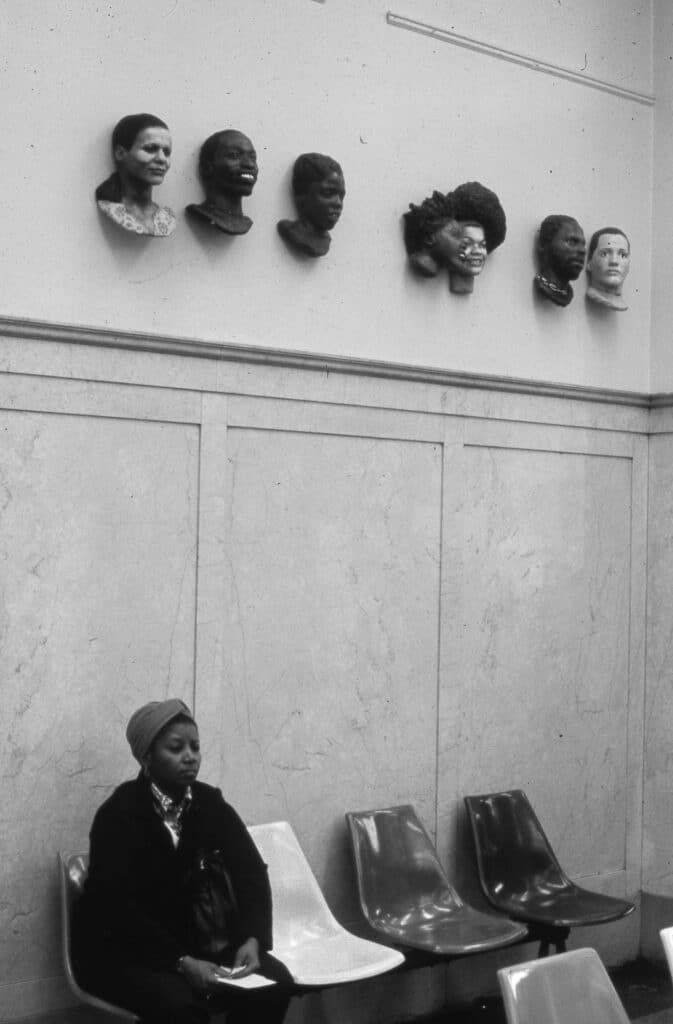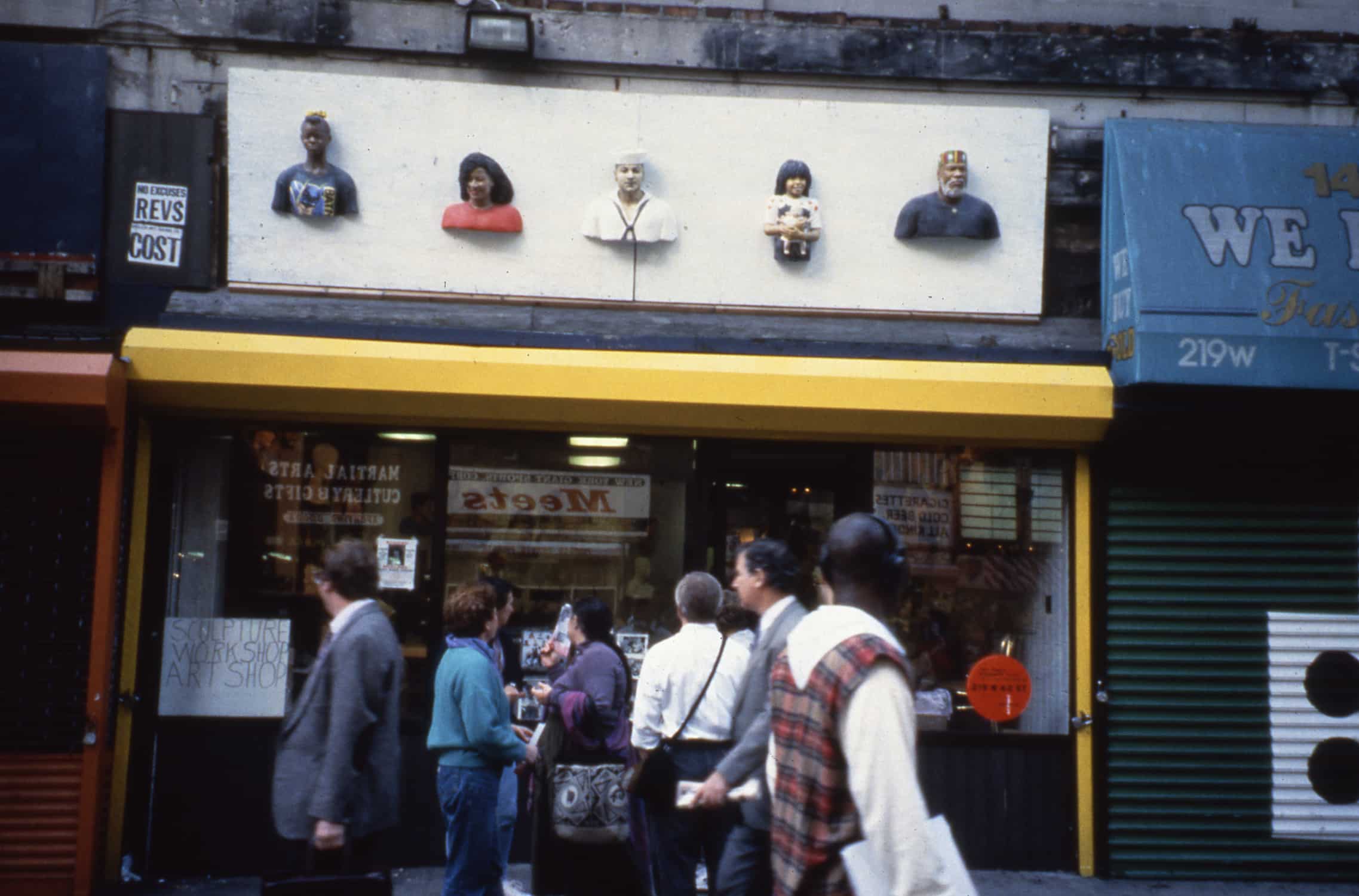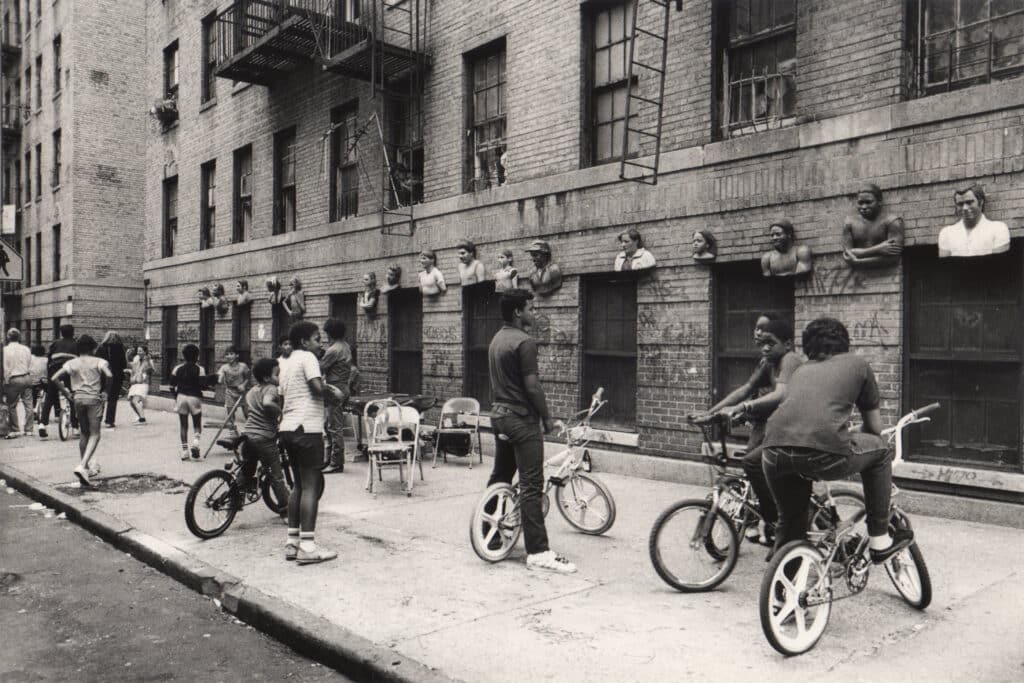In 1970, Rigoberto Torres, then age 10, moved with his parents from Puerto Rico to the South Bronx. But they struggled to set down roots as the neighborhood went up in flames. “I ended up in a shelter, not once but a couple of times,” Torres says. “That was a rough time for me but it had two sides.”
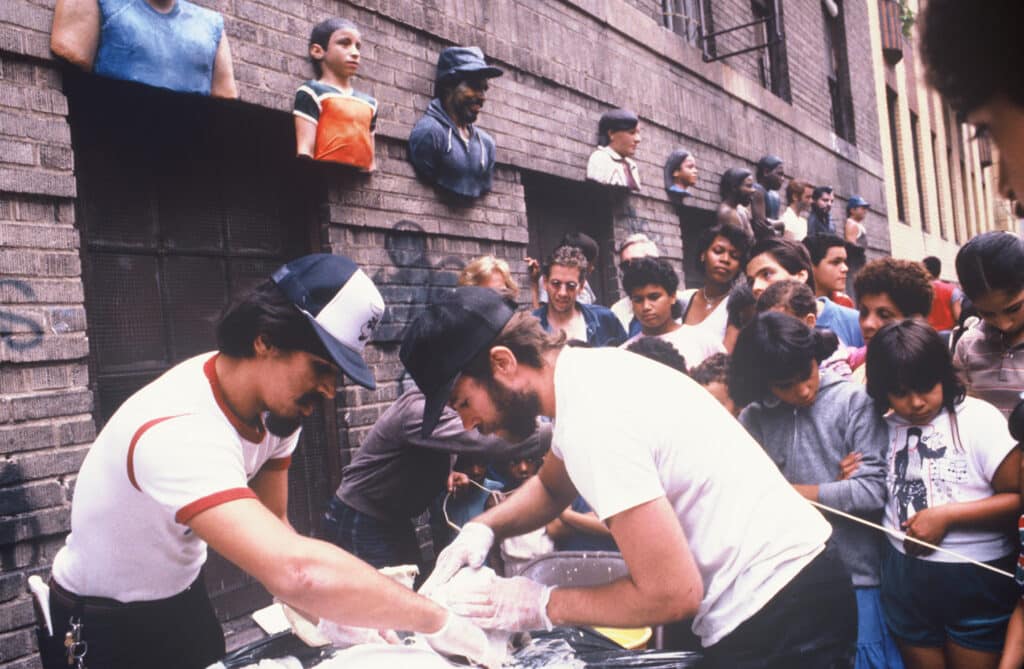
During high school, Torres worked at his uncle Raul Arce’s local factory making Botanica statuettes and learning sculpture techniques by copying classical works of art. Then in 1979, everything changed when his cousin, David Ortiz, introduced Torres to artist John Ahearn.
In 1974 John and his identical twin brother Charlie Ahearn, creator of Wild Style, moved from Binghamton to New York City, ready to stake their claim on the city’s radical art scene. One night while staying at FUN gallerist Patti Astor’s apartment, Ahearn picked up a copy of Make-up for Film and Television and got the idea to lifecast faces.
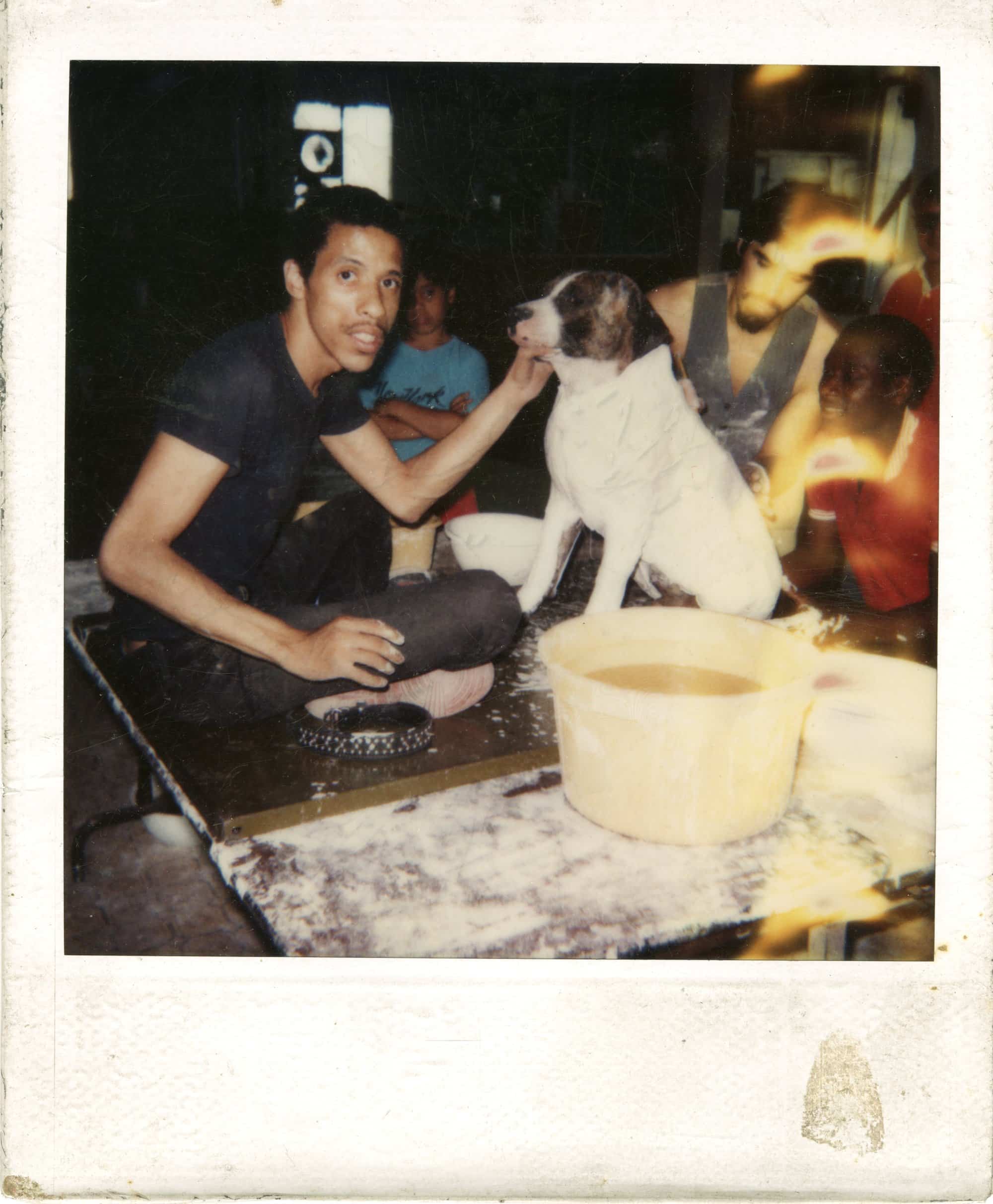
South Bronx Wall of Fame
In the late 1970s John Ahearn took his lifecast practice to Fashion MODA, the avant-garde art gallery located in the heart of the South Bronx. Gallerist Stefan Eins brought downtown artists like Keith Haring, Jane Dickson, and David Wojnarowicz uptown, showcasing their work alongside the Bronx graffiti writers like John Crash Matos and Chris Daze Ellis.
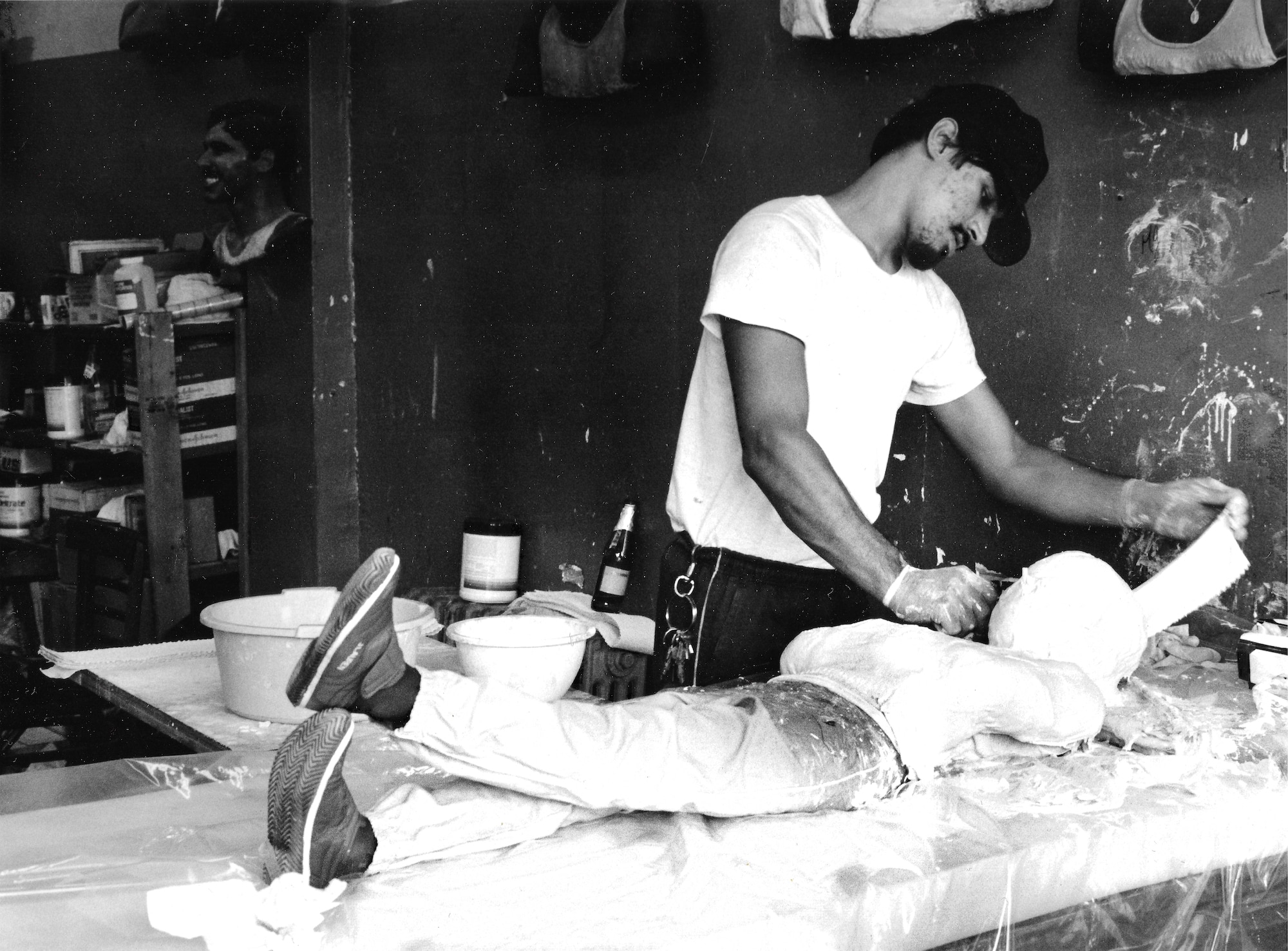
Ahearn began staging lifecast sessions in the window of Fashion MODA, drawing a crowd of passerby who were fascinated by the scene unfolding before their eyes. Like something out of a vintage horror movie, they watched people from the community step up to the stage, lie down on their backs, and adopt a pose. Straws were then placed in their nose so they could breathe as Ahearn poured plaster over their faces.
Once dry, Ahearn peeled the piece off, then set to work painting a likeness of the person so remarkable that it brought members of the community to the gallery in droves. Ahearn hung the portraits at Fashion MODA as part of the “South Bronx Wall of Fame,” an on-going installation that showcased the latest creations.
Torres’s cousin, David Ortiz, was one of the lucky few whose likeness had been preserved — one all the more astounding in that it was made while he was laughing open mouth with joy. After their encounter, Ortiz introduced Torres and Ahearn and from that moment a connection was formed — one that would transform both their lives forevermore.
The Bronx is Burning
By the end of the 1970s, the South Bronx became synonymous with “urban blight” as vast swaths of burned out buildings, mounds of rubble, an empty lots littered the streets — creating a picture perfect background for a dystopian stop on Ronald Reagan’s 1980 Presidential campaign. But while stencil artist John Fekner’s grave warnings of DECAY and BROKEN PROMISES on Charlotte Street spoke of failed government policy, John Ahearn and Rigoberto Torres took a different tack, crafting vibrant and uplifting displays of public art.
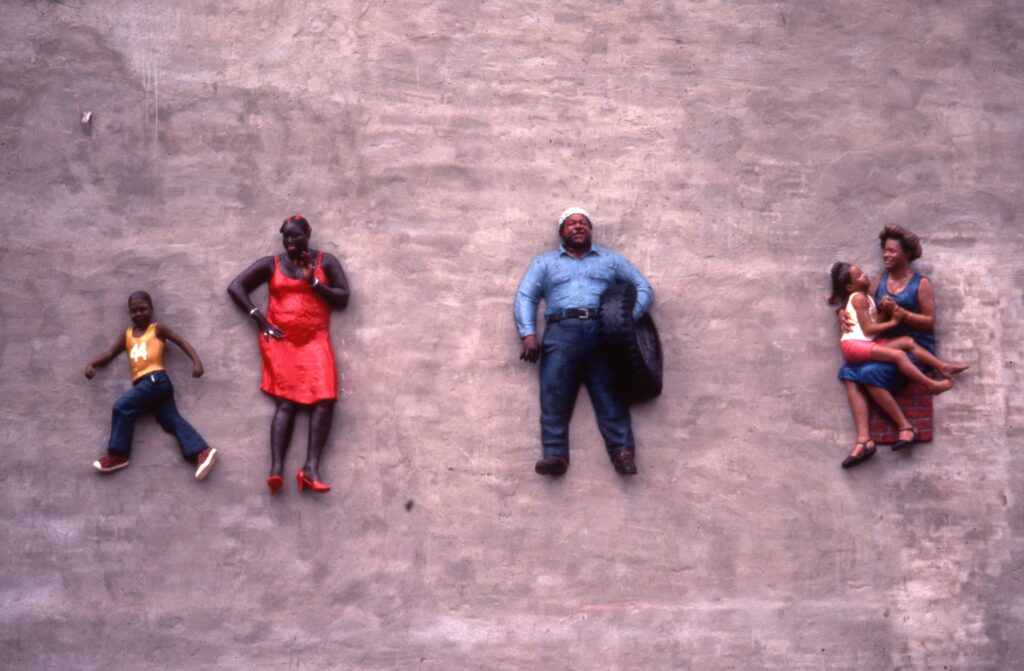
Pointing to the infamous moment when announcer Howard Cosell told the entire world, “There it is, ladies and gentlemen. The Bronx is burning” from Yankee Stadium during Game 2 of the 1977 World Series, Ahearn says, “The South Bronx was on everybody’s minds. There was a lot of talk about how the Bronx had gone wild and was out of control but no one ever talked about the reasons why it was burning. The city didn’t want these neighborhoods to work.”
For Ahearn, the Bronx offered an escape from the downtown art world, a place where he didn’t feel he could fully realize his vision as an artist. “I never related to being downtown and I felt lost,” he says. “The only future I saw for myself was in the Bronx. I could have never done anything like that downtown.”
![[left to right] : La Free da Mincey, Javette Potts, Tawana Brown, and Staice Seabrine recreate their roles in Double Dutch, which is located on their apartment building, Kelly Street, Bronx, 1982. © Martha Cooper](https://www.blind-magazine.com/wp-content/uploads/2023/04/11.-double-dutch-martha-cooper-1982-1.jpg)
In 1980, John Ahearn moved to Walton Avenue, just a stones throw from Rigoberto Torres’s family home, and they decided the time was right to open a studio together. The following year, they began working with community groups like Art in Public Places to create installations like the iconic Double Dutch Girls on Intervale and Kelly Streets in 1982.
Swagger and Tenderness
From those humble beginnings, John Ahearn and Rogberto Torres created a singular portrait of the community, preserving the idiosyncratic characters who make the South Bronx a world all its own — one that is down to earth yet never lacking sabor (“flavor” in Spanish). In the new exhibition, Swagger and Tenderness: The South Bronx Portraits by John Ahearn and Rigoberto Torres, the artists bring together over 100 artworks and archival materials from the past four decades, offering an intimate look at the space where art follows life and life follows art.
As the centerpiece exhibition of the museum’s 50th anniversary, Swagger and Tenderness speaks to the importance of building deep roots that stand the test of time. For Torres, that connection begins in the home as he began working with families. “I wanted to get to known them better so I let tem know who I was inside my heart and mind,” he says. “They understood I was not taking advantage of them.”
A love letter to the people of the Bronx, Swagger and Tenderness is the artists’ first major survey since 1991. With the dynamic duo exhibiting on the Grand Concourse at the Bronx Museum of the Arts, Ahearn and Torres create an intimate and inviting a look at the community from the inside out. Longtime residents have made their way to the show, snapping selfies with statues of themselves and loved ones. Each of the sculptures is carefully lit, casting them in a warm glow that floats around it like an aura.
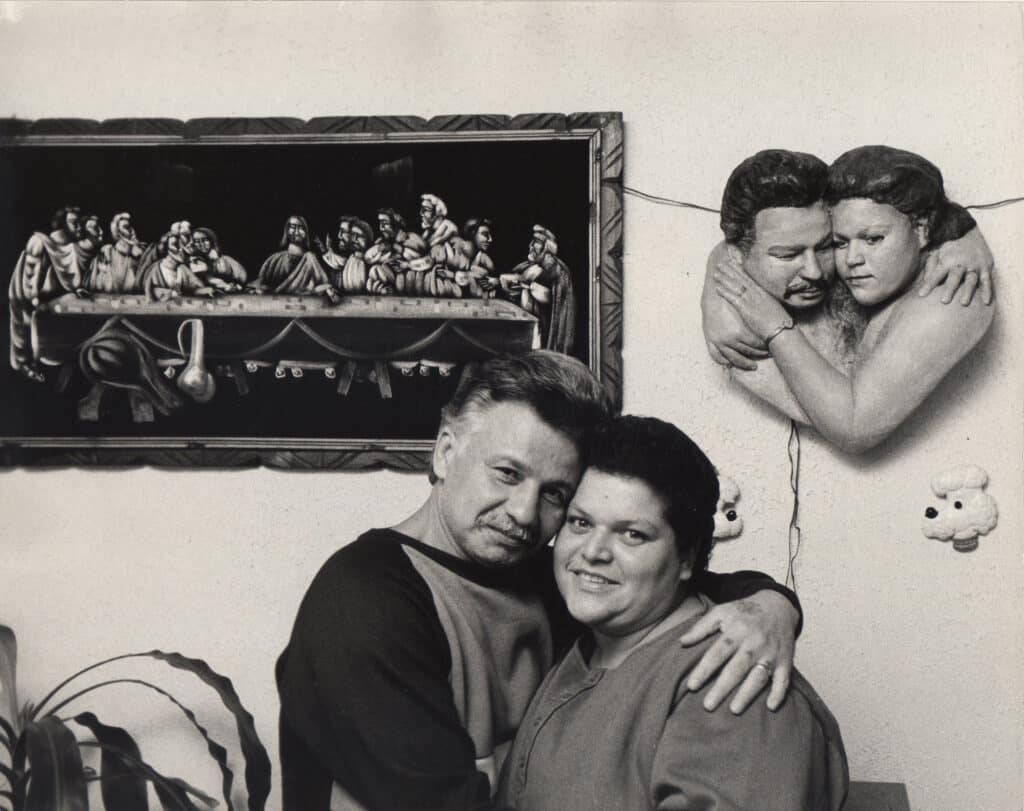
“You could say it’s a little bit like a storybook ending,” says Ahearn. “This feels very special because it gives people the feeling of security, that the work is being taken care of and being loved. When you see it in the museum you think, maybe this has a future.”
Swagger and Tenderness: The South Bronx Portraits by John Ahearn and Rigoberto Torres is on view through April 30, 2023, at the Bronx Museum of the Arts in New York.

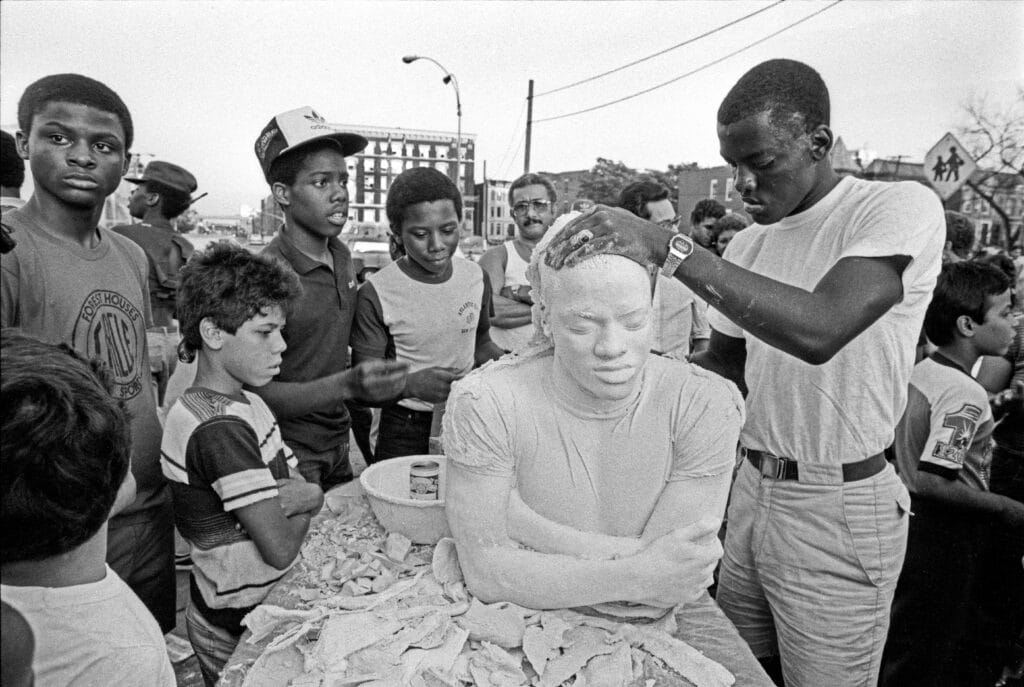
![Torres [left] and Ahearn [center] during casting of Carlos, with Fashion Moda co-directors, Stefan](https://www.blind-magazine.com/wp-content/uploads/2023/04/4.-fashion-moda-1979-christof-kohlhofer.jpeg)
